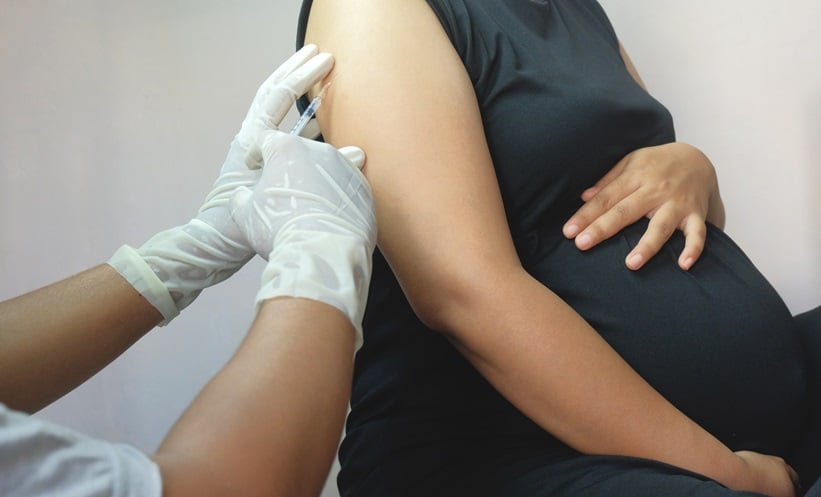Abstract
The use of donor oocytes has expanded the scope of assisted reproductive technology (ART) for women with poor oocyte quantity and quality. In vitro fertilisation with oocyte donation (IVF-OD) is considered to give better implantation, pregnancy, and livebirth rates compared to IVF with autologous oocytes. Maternal age, infertility factors, BMI, smoker status, and ethnicity reduce reproductive outcome. An increasing demand and a good success rate with oocyte vitrification programmes have led to the formation of oocyte banks, reducing the need for donor–recipient cycle synchronisation and allowing egg sharing. Obstetric and neonatal complications with donor oocytes are significantly increased in comparison to autologous IVF and spontaneous pregnancies. The risk of pregnancy-induced hypertension (PIH), pre-eclampsia (PE), prematurity, low birth weight and very low birth weight are increased, as is the need for operative delivery. The age group of these patients and the increase in obstetric and neonatal complications associated with multiple pregnancy, dictates the use of single embryo transfer. As increasingly older women enter these programmes, concerns for maternal and fetal health necessitate guidelines to set an age limit for offering the procedure. Advanced paternal age is also raising concerns in long-term follow-up studies in neonates.
INTRODUCTION
In vitro fertilisation with the use of donor oocytes (IVF-OD) has become an integral part of infertility treatment today. The procedure is used to achieve pregnancy in women with premature and age-related ovarian failure, poor ovarian reserve (due to disease or advanced age), Turner’s syndrome, recurrent implantation failure due to poor oocyte quality, and recurrent abortions.1,2 Couples also opt to use donated oocytes to avoid transmission of severe genetic diseases.3
Results achieved in recipients surpass those attained with use of autologous oocyte IVF4-6 in good prognosis patients, resulting in an exponential rise in the procedure. In the USA, the annual number of donor oocyte cycles increased from 10,801 to 18,306 between 2000 and 2010,7 whilst the European IVF Monitoring (EIM) consortium for the European Society of Human Reproduction and Embryology (ESHRE)4 reported 7,171 IVF-OD cycles in 2006 and 33,605 cycles in 2012. Indeed, couples will travel outside their country if local laws forbid oocyte donation. The procedure is so popular that oocyte banks8 have been established to allow for sharing of oocytes from a donor, reduced waiting times involved in sourcing and screening donors, and circumventing donor–recipient synchronisation. Cross-border reproductive care too is gaining attention, as assisted reproduction technology (ART) practices and obstetric care may differ between countries.9
The donor–recipient model has provided an insight into various aspects of ART, such as the importance of oocyte age in implantation,10 endometrial receptivity,11 and the contribution of male factors to IVF failure.12 Perhaps the most thought-provoking realisation is the knowledge that the reproductive system can function perfectly in the absence of a genetic connection.2
REPRODUCTIVE PERFORMANCE IN RECIPIENTS
Pregnancy and Implantation Rate
The use of young (<35 years), healthy donors has resulted in high pregnancy rates (PR) and implantation rates (IR) in recipients. The EIM consortium report of 20124 on reproductive outcome with use of donor oocytes, reported a PR of 48.4% per fresh embryo transfer, 35.9% per frozen embryo transfer (FET), and 45.1% using frozen oocytes. In comparison, use of autologous oocytes resulted in a clinical PR (CPR) of 29.4% per aspiration, 33.8% per transfer, and 23.1% with FET, and an overall multiple PR of 17.9%. The rate of twin pregnancy was also significantly higher in women with IVF-OD compared to IVF and spontaneous pregnancy (39.4% versus 15.0% with IVF and 2.5% with spontaneous, p<0.001).13
A comparison of pregnancy outcomes in 15,037 fresh donor oocyte versus 11,420 autologous IVF cycles in women aged 20–30 years (in both groups) between 2008 and 2010 reported that, despite similar demographics, stimulation, and embryo parameters, the odds of implantation, (odds ratio [OR]: 1.33, 95% confidence interval [CI]: 1.26–1.40), clinical pregnancy (CP) (OR: 1.43, 95% CI: 1.35–1.52), and live birth (LB) (OR: 1.26, 95% CI: 1.18–1.33) were significantly higher in donor cycles after adjusting for patient age, number of oocytes retrieved, and number of embryos transferred. A sub-group analysis revealed higher odds of implantation, CP, and LB in intracytoplasmic sperm injection (ICSI) cycles, ICSI with male factor, unexplained infertility (UI), cleavage stage transfer, blastocyst transfer, and elective single blastocyst transfer with donor eggs. The odds for LB, which is considered the best measure of outcome, were also higher in IVF-OD sub-groups; ICSI (OR: 1.13, 95% CI: 1.01–1.26), ICSI with male factor (OR: 1.37, 95% CI: 1.28–1.48), and UI (OR: 1.47, 95% CI: 1.20–1.81). Women with conditions that could affect the uterine environment or lead to interference with implantation were excluded from the study.14
Effect of Maternal Age
As more and more women delay motherhood, there is an increasing demand for donor cycles, paralleled by a rise in recipient age. Does a woman’s age per se affect implantation? Is menopause a disadvantage? What are the maternal complications? How does the neonate fare? These are critical issues that need to be examined, particularly in relation to women of very advanced age. It would appear that uterine senescence reduces the capacity for implantation, perhaps due to age-associated uterine factors such as fibroids and reduced vascularity. Decreased PR in recipients beyond 49 years have been reported by Check et al.15 A poorer pregnancy and live birth rate (LBR) has also been reported by Paulson et al.16 in women >50 years old (range: 50–63). Recent data from the Society for Assisted Reproduction Technology (SART) registry also suggest that donor oocyte recipients have stable rates of pregnancy (CPR: 62.8%) before the age of 45 years, after which there is a small but steady and significant decline (CPR: 59.9%).17 Ameratunga et al.,18 comparing PR in women with premature ovarian failure (Group A) and physiological menopause (Group B) found similar cumulative PR; Group A (75%) versus Group B (72%). The average number of stimulated cycles for each woman to produce a LB was 1.75 and 1.4 in Group A and B, respectively.
Effect of Paternal Age
The effect of advanced paternal age on fertility, pregnancy, and neonatal outcome has received very little attention. Although there is no clearly accepted definition of advanced paternal age, an age >40 is often used as a cut-off. Conflicting results have been reported in literature regarding the contribution of advanced paternal age. Gallardo et al.19 stated that age ≤64 years did not affect embryo development in vitro as well as implantation in recipient uteri. On the other hand, Campos et al.20 reported that paternal age had a detrimental effect on reproductive outcome of oocyte donation cycles when both men and recipient are ≥39 years old. Frattarelli et al.21 evaluated 1,023 infertile couples undergoing an anonymous oocyte donation cycle. After controlling for donor age, they reported significantly lower PR when male age was >50 years. The LBR and miscarriage rates were 56.0% versus 41.3%, and 24.4% versus 41.5% in men ≤50 and >50 years (p<0.01), respectively.
It is possible that recipient age and age-related maternal factors such as uterine fibroids may bias results. A systemic review and meta-analysis including 12,538 oocyte-donation cases concluded that the available evidence did not suggest an association between advanced paternal age and adverse reproductive outcome in donor oocyte cycles, although the quality of evidence was suboptimal.22 It is possible that DNA repair mechanisms within young oocytes corrects exogenous and endogenous paternal DNA damage, thus overriding the effect of the ageing sperm. Long-term follow-up studies have found an association between advanced paternal age and an increase in de novo autosomal dominant disorders, autism, schizophrenia, impaired neurocognitive development, and increased risk of malignancy.23
Oocyte Sharing
Oocyte sharing involves a woman sharing some of her eggs with another patient in exchange for free or reduced-cost fertility treatment.24 This concept has generated considerable interest, especially in countries where commercial egg donation is not allowed or there is paucity of egg donors. The concern that reproductive outcome may be reduced in these patients has been negated, with similar PR being reported in both donors and recipients.25 It is important to bear in mind, however, that such good results require meticulous donor screening for ovarian reserve, age, and cause of infertility. If the number of eggs recovered is lower or of poor quality, both donor and recipient’s cycles may be compromised with neither having sufficient good quality embryos to transfer and/or cryopreserve, necessitating a fresh IVF cycle with its inherent costs. Oocyte vitrification and banking has changed the concept of oocyte sharing from one that involved sharing of oocytes between two subfertile couples to one where the eggs of a commercial donor are shared.
Oocyte Banking
Reports of good PR with cryopreserved embryos26,27 and the reduced constraints of donor-recipient synchronisation has encouraged the use of frozen embryo transfers. The availability of frozen oocytes and success of oocyte vitrification9 has added to convenience, increasing the number of cryopreserved cycles. Data from a national registry show a trend towards the increase in use of frozen embryos: 26.7% to 40.3% from the years 2000–2010.8
Though a lower LBR with cryopreserved oocytes was shown by Kushnir et al.,28 recent larger studies have shown a significant improvement in results. A retrospective cohort study compared pregnancy outcome using embryos generated from fresh versus frozen donor oocytes.29 After adjusting for significant covariates and looking at overall cycles, those using a cryopreserved oocyte had lower PR (51.1% versus 58.5%; adjusted risk ratio [aRR] 0.88, 95% CI: 0.81–0.95), and LBR (43.0% versus 49.4%; aRR: 0.87, 95% CI: 0.80–0.95) compared to fresh oocyte cycles. However, looking only at cycles that reached embryo transfer, there was no evidence of differences in IR, PR, or LBR. Lower number of cycles were cancelled before embryo transfer with frozen oocytes (aRR: 0.74, 95% CI: 0.57-0.96). A decreased rate of miscarriage was seen with the transfer of one rather than two embryos. Cobo et al.8 projected an oocyte-to-baby rate of 6.5% and found that the probability of achieving a baby increased progressively with the number of vitrified oocytes used, a plateau being reached at 25 oocytes.
Clinical Factors Affecting Endometrial Receptiveness in Oocyte Donation Cycles
Apart from recipient age, the presence of hydrosalpinx, high BMI,12 and tobacco consumption30 are associated with a poorer outcome, while endometriosis and adenomyosis are not.12 The effect of obesity was addressed in this study and the authors observed lower IR and PR, and higher miscarriage rates in women with a BMI ≥30 kg/m2. A totally contradictory conclusion was drawn in a systematic review and meta-analysis undertaken to look at the effect of obesity on the chance of pregnancy in recipients. Evaluating >4,000 patients, the authors could not find an association between obesity (BMI: ≥30 kg/m2) and chance of pregnancy after IVF-OD (risk ratio [RR]: 0.98, 95% CI: 0.83–1.15). Additional analysis assessing associations between recipient obesity and embryo implantation, miscarriage, and LB also failed to show a negative effect. However, most studies included were small and showed heterogeneity.31 Interestingly, an increasing oocyte donor BMI is associated with a reduction in CP and LBR.32
Racial and Ethnic Differences
Asian and Hispanic women undergoing oocyte donation did not have a reduction in CPR or LBR compared to white women. Black women, however, had a reduced chance of pregnancy and a trend toward lower LBR suggesting the contribution of uterine factors to reproductive outcome.33
Maternal Complications
The literature suggests that infertility itself is a risk factor for maternal and perinatal complications, and women who conceive through use of ‘high technology infertility treatments’ are at an even higher risk.34 Concerns about antenatal complications associated with the use of donor eggs were expressed from the early days of this treatment. One of the earliest reports suggesting a very high rate of pre-eclampsia (PE) came from 1987, in a study by Serhal et al.35 that included just 10 recipients. Apart from an increased risk of pregnancy-induced hypertension (PIH) and PE,36-38 studies demonstrate an increased occurrence of first-trimester bleeding, gestational diabetes,39 placental abnormalities,40 intrauterine growth restriction (IUGR), preterm delivery,40,41 prolonged maternal hospitalisation after delivery, and increased prevalence of caesarean section.42 Stoop et al.,43 in a study including 205 donor oocyte and 205 autologous oocyte pregnancies, stated that oocyte donation was associated with an increased risk for PIH (matched OR: 1.502, CI: 1.024–2.204) and first trimester bleeding (matched OR: 1.493, CI: 1.036–2.15), independent of the recipients’ age, parity, and plurality, and independent of the age of the donor or the partner. Although the observed incidences for PE (11.8% versus 6.4%), HELLP syndrome (0.98% versus 0.59%) or gestational diabetes (7.4% versus 3.4%) were almost twice as high in recipient pregnancies, these differences were not statistically significant. No differences were observed between the two matched groups with regard to gestational age, mean birth weight and length, head circumference, and Apgar scores. Risk of complications increases with age and multiple pregnancy. The incidence of PE reported in different studies ranges from 9.8–12%14,44 to 13–35%.45,46
In a national retrospective cohort case study,42 a comparison was made between the obstetric outcome of women who conceived with donated oocytes (n=76), non-infertile nulliparous women who conceived spontaneously (n=115), and 63 women who conceived after non-donor IVF. Women who conceived with OD had a higher risk of hypertensive disorders (adjusted overall response [aOR]: 2.84, 95% CI: 1.04–7.81), oligohydramnios (aOR: 12.74, 95% CI: 1.24–130.49), postpartum haemorrhage (aOR: 7.11, 95% CI: 2.02–24.97), and retained placenta (aOR: 6.71, 95% CI: 1.58–28.40) when compared to women who conceived spontaneously, after adjusting for relevant variables. A similar trend was noticed when IVF-OD was compared to autologous IVF, although this was not statistically significant. More recipients had induction of labour (aOR: 2.80, 95% CI: 1.10–7.08) and caesarean delivery (aOR: 5.20, 95% CI 2.21–12.22) than women with autologous IVF. There were no differences in gestational length between the groups.
A systematic review and meta-analysis including 11 retrospective cohort studies47 also reported a 3-fold increase in the likelihood of developing PE in pregnancies with IVF-OD compared to those achieved with autologous oocytes. The prevalence of PE was 17.2% (9–29%) in OD pregnancies, while it was 5.7% in IVF pregnancies (0–13%) (p<0.001). The meta-regression analysis showed that neither multiple pregnancies, nor patient age significantly explained the variability of the effect of oocyte donation on PE. Statistical evaluation ruled out heterogeneity between the studies. Although studies show a discrepancy in the clinical manifestation of hypertensive disorder (PIH/PE) the underlying factor appears to be placental dysfunction.
Possible Causes of Pregnancy-Induced Hypertension/Pre-eclampsia in In Vitro Fertilisation with Oocyte Donation
PE and PIH are believed to be the result of an altered feto-maternal immune response resulting in reduced trophoblastic invasion of the spiral arteries, a precursor to the placental pathology witnessed in PIH/PE. It is postulated that the trophoblastic HLA-C in donated oocytes is less recognisable to the maternal immune system, being completely allogeneic. This possibly leads to an altered functionality of the uterine natural killer cells and consequently an altered maternal blood supply to the placenta.48-50 Additionally, autoantibodies are associated with premature ovarian failure51 and it is postulated that autoantibodies could lead to disruption of trophoblastic invasion. One must also bear in mind that there is an independent risk of nulliparity and age associated factors such as pre-existing hypertension and gestational diabetes. The contribution of family history of idiopathic hypertension may also be a predisposing factor.52,53
Neonatal Complications
The donor oocyte risk rates for neonatal complications are higher than those found with use of autologous IVF. Neonatal complications include an increased risk of prematurity, extreme prematurity, small for gestational age (SGA), low birth weight (LBW), and very LBW (VLBW).43,54,55 The increased rate of preterm delivery is probably responsible for the increased rate of LBW babies.56 A good perinatal outcome in IVF-OD was reported in 27.5% recipients using fresh embryos,8 with good perinatal outcome being defined as a singleton live-born infant delivered at ≥37 weeks and weighing ≥2,500 g. A comparison of singleton birth after IVF with autologous oocytes and donor oocytes adjusted for maternal age and infertility factor, reported an increased risk of LBW (aOR: 1.21, 95% CI: 1.13–1.30), VLBW (aOR: 1.28, 95% CI: 1.10–1.49), and SGA with IVF-OD.55 Results of a meta-analysis of 23 studies comparing perinatal health outcomes in pregnancies with autologous and donor oocytes showed similar perinatal outcomes.54 The risk ratio for preterm (<37 weeks) births was 1.26 (CI: 1.23–1.30) and for preterm with LBW was 1.24 (CI: 1.19–1.29). LBW outcomes were improved in term donor oocyte neonates (RR: 0.86, CI: 0.8–0.93). Regarding perinatal mortality, similar rates are reported between IVF and IVF-OD singletons.47
Prognostic Factors
Elective single embryo transfer and blastocyst transfer improved the perinatal outcome by an OR of 2.32 (95% CI: 1.92–2.80) and 1.17 (95% CI: 1.04–1.32), respectively. Infertility factors and ethnicity are also associated with perinatal outcome. The odds of good outcome decreased in tubal and uterine factor infertility and in non-Hispanic, black recipients. Surprisingly, recipient age was not associated with the likelihood of good perinatal outcome.8 Twin pregnancies, pre-existing chronic pathologies, and development of obstetrics complications led to poorer perinatal outcome.57
SHOULD THERE BE AN AGE LIMIT FOR RECIPIENTS? PREGNANCY IN WOMEN OF ADVANCED AGE
Judicious use of technology forms the core of good medical practice. The age at which women are attempting pregnancy is increasing and there are reports of births above the age of 60,19 raising serious concerns on maternal safety. Based on longevity and health-related diseases, most physicians limit IVF-OD treatment to an age of 50 years. Guesdon et al.46 reported on the obstetric’s outcome in women below (45–49) and above 50 years. The rates of PIH and IUGR in singleton pregnancies was statistically higher in the older than in the younger group (19.2% versus 5.5%, and 30.7% versus 14.3%, respectively). Complication rates with twins were higher compared to singletons, but similar between groups.
The Committee of the American Society for Reproductive Medicine (ASRM),58 after a review of existing literature, concluded that healthy women in the age range of 50–54 years who are well-prepared for parenting, are candidates to receive donated eggs. A thorough medical evaluation to assess physical fitness is mandatory before attempting transfer of embryos to any woman >45 years.
CONCLUSION AND FUTURE RECOMMENDATIONS
The use of donor oocytes has expanded the scope of ART for women with poor oocyte quantity and quality. Implantation, pregnancy, and LBR are higher compared to IVF with autologous oocytes. This has encouraged increasingly older women to attempt pregnancy without understanding the inherent risks. Oocyte banking is becoming popular due to improved results achieved with vitrified oocytes. The global rise in viral infections underpin the importance of a mandatory quarantine period for oocytes. Use of vitrified oocytes from oocyte banks should be the way forward, in terms of both safety and procedure efficiency. A move towards single embryo transfer and a pre-procedure comprehensive health check will go a long way in reducing obstetric and neonatal complications. Although maternal age is more relevant to outcome, paternal age does appear to have an association with long-term neonatal health and further studies are required in that area.








